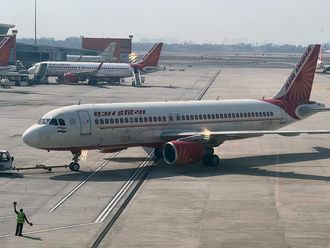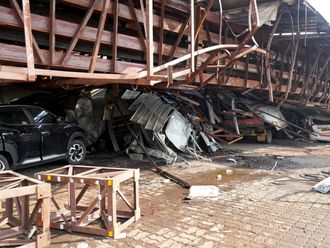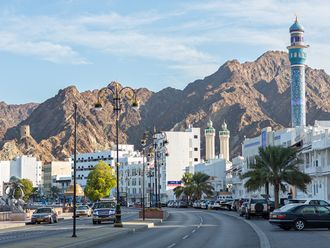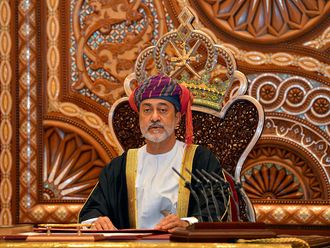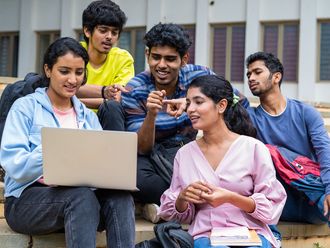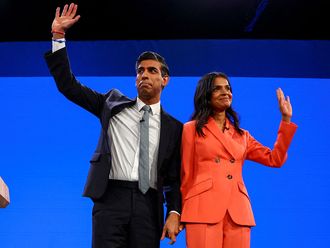
New Delhi: For Rathika Ramasamy, India's first woman wildlife photographer, it all began with a Minolta camera gifted to her by her uncle, a doctor and amateur photographer. "I was fond of shooting people and places. It was later that my love for environment drew me towards nature and wildlife photography," she says.
Ramasamy believes that wildlife photography needs a lot of patience and perseverance. "But yes, to me, at times, photography is not important. To watch nature is so stimulating and gives me energy that at such times, shooting pictures comes as a bonus."
She looks for a story and action in her shots which, in her opinion, give a liveliness to her photographs.
Some of her works include shooting for calendars for Jawaharlal Nehru University in their own environs in New Delhi. The themes were — birds (2007), flowers (2009) and landscape, parks and roads (2010).
She speaks to Gulf News in an exclusive interview.
GULF NEWS: What drew you towards animals and birds?
RATHIKA RAMASAMY: I am a nature lover and in 2003 my chance visit to Bharatpur Bird Sanctuary in Rajasthan changed the course of my life. I fell in love with birds. Being in Delhi was an advantage, as I got to see migratory birds from October to February every year at bird sanctuaries in Sultanpur and Okhla. Animals were a fascination always, but birds provide a challenge. Not only are they tiny and rarely sit in one place for long, you need a lot of patience to shoot them.
So how do you make it possible to capture them in your camera? Is it important to research before shooting?
Yes, a lot of research goes into it. To know the behaviour of the birds during different seasons is very important. I have learnt that birds are very energetic in the morning and engrossed in a lot of activities — looking for food and feeding their babies. Since I know their behavioural pattern and how they will react next, I prepare for the shoot accordingly and am ready in time.
Also, if I want to shoot Himalayan birds, I know during the winters they come down to the foothills, so I plan my schedule in advance. I get local guides to help me, but in bird sanctuaries it can be very tiresome, as one has to walk long distances carrying equipment weighing around 15 kilograms, which includes cameras, lenses and a tripod.
As a photographer, what changes do you see in forest environment since the last decade?
Earlier, there was no need for pre-bookings. But these days lots of people visit the sanctuaries and even take pictures, so though there is more awareness among the tourists, the sanctuaries are crowded.
The advantage now is that vehicles are fitted with GPRS and radio communication system, which is very beneficial. If a vehicle spots a tiger, the driver is able to inform others about the location. Since I have travelled extensively to almost all national parks and bird sanctuaries, the experiences are invigorating.
Which issues touch you the most when you visit national parks or sanctuaries?
Deforestation pains me. Poaching is another major issue. It's important to educate people that migratory birds come from thousands of miles. Though now that environmentalists and NGOs are creating awareness and the government is working towards providing jobs to the poachers, it is making a difference.
In what manner are Indian forests different from African forests?
In India, the forests are very tough. And because they are very dense and comprise gigantic trees, the light is very less. Since photography is all about lighting, it makes the job of a photographer difficult. But African forests do not consist of huge trees, so one can shoot from morning till evening.
As for birds, since they are different from one country to the other, I have to know what to find and where. The knowledge has to be thorough, because there's no one to help you. One miss and all is gone in a second! Even though the guides in India and abroad are quite knowledgeable, a photographer has to be a good naturist and must have a sharp eye.
What can India learn from other countries regarding wildlife?
In many countries, especially Africa, wildlife tourism is taken very seriously. But India needs to do a lot more. It's important to rehabilitate people. Else, in the coming years, animals will remain only a memory in images.
Any interesting incidents?
In Tanzania, last year, I got to see a lion from a distance of two feet. It was so mesmerising. For some minutes I stood stunned looking at the magnificent animal and simply forgot to shoot. I was lucky that it stood at one place for quite some time and I could take some awesome pictures.
Any instance when you were scared in the forest?
Elephants can be dangerous. I had one such experience at the Jim Corbett Park in 2005. I was very keen on shooting a tiger and was looking for it. We reached the narrow road, where on one side was the thick forest and on the other, the deep valley. And suddenly we saw an elephant coming towards us. The driver stopped the vehicle and for several minutes we all sat scared and motionless.
We thought it was the end of the road for us, but to our relief the elephant turned and went back. It was a jubilant moment to have survived. I shudder to think that in a split second the elephant could have tossed our vehicle down the valley.
Is fear of the forest one of the reasons why youngsters are keen on fashion photography than wildlife photography?
It's not so much for fear as for glamour and good money. But fashion photography too is not easy, as it involves learning lighting techniques.
Does our education system teach children about nature?
No, we are not educating children enough about nature. Awareness must be created at an early age to love environment, nature, animals and birds.
To do my bit, I make small contribution by holding workshops for youngsters on how we can preserve our environment and forests.
Profile
- Rathika Ramasamy was born to Thayamma and Ramasamy in Theni, Tamil Nadu
- Educated at VV Higher Secondary School, Theni
- Completed Bachelor of Engineering in computers from SRM Engineering College, Madras University
- She has a Masters in Business Administration
- Worked as a software engineer in Theni
- Travelled to South Asia, Africa, France, the UK and Europe


